A rose by any other name….would still be a rose! But, boy, are there a ton of varieties out there. Garden, knockout, heirloom, tea—there are more than 150 species to choose from and thousands of hybrid rose flowers. So how do you know which rose is for you? Well, most specialists divide roses into three main categories: Wild Roses, Old Garden Roses, and Modern Garden Roses.
Types of Roses
The most common roses in today’s gardens are Modern Roses. These are varieties bred after 1867. Unlike Old Garden Roses, Modern Roses bloom throughout the the season. They generally have a larger bloom size, but some say they lack the hardiness, disease resistance, and fragrance of Old Garden roses.
Old Garden Roses have been in existence since before 1867 and are sometimes referred to as “heritage” or “historic” roses. They have a notably strong fragrance, double-flowered blooms, and tend to be highly disease-resistant. They typically only bloom once per season. Learn more at the The Heritage Rose Foundation and the American Rose Society.
Wild Roses, or “Species Roses,” are the wildflower of the rose world. These are roses that haven’t been hybridized (cross-bred with other plants). They usually have single-bloom, 5-petal flowers, and are almost always pink. Finding a white or red wild rose is an anomaly and a yellow one is even rarer.
Caring for Roses
Depending on what you choose, roses can be quite easy to care for. Of course, you’ll have to learn how to prune roses, and it might be nice to learn how to grow roses from cuttings, too. If you’re planning an English garden design—or really any kind of garden design—roses are a must.
Read on for more about 16 different kinds of roses you should consider for your home garden.
1 Climbing Roses
Type: Modern Rose
Shown: ‘Zephirine Drouhin’
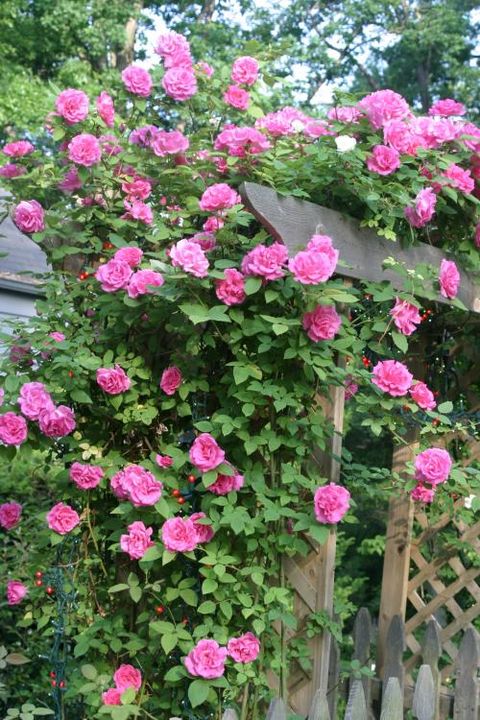
Despite what the name may imply, climbing roses aren’t vines. They have stiff canes that can be trained along a trellis, fence, or downspout. These types of roses produce more flowers when grown horizontally and tend to have large flowers that almost always rebloom.
2 English Roses
Type: Modern Rose
Shown: Graham Thomas

If you’re looking for a hardy, disease-resistant rose with a delightful rose scent, this may be the rose for you. Available in a range of colors, these varieties have been carefully cultivated for reliability, most notably by David Austin in England. Most are shrubby, which makes them ideal for practically any garden situation—containers, hedges, and more formal settings.
3 Floribunda Roses
Type: Modern Rose
Shown: Sexy Rexy
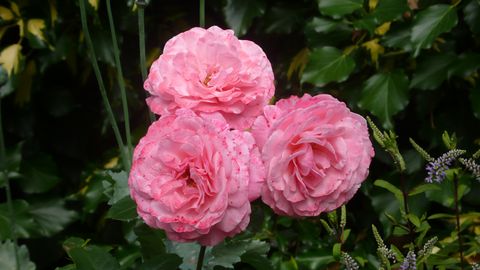
A cross between Hybrid Tea and Polyantha roses, these are ideal for mixed borders and large bed plantings. They don’t typically have much of a scent, although you can find newer breeds that are fragrant. The blooms present in large clusters to give color over a long season.
4 Groundcover Roses
Type: Modern Rose
Shown: Avon
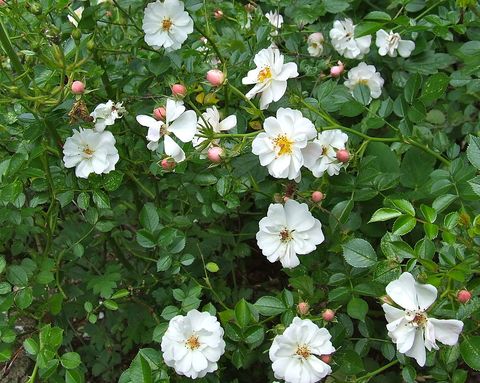
These shrubby roses, also known as “landscape” roses, are low-growing, sprawling specimen that are one of the newer trends in roses. They bloom from spring to frost with little effort and can be found in single and double bloom forms. Typically, they reach up to 3 feet tall and spread far beyond.
5 Grandiflora Roses
Type: Modern Rose
Shown: Montezuma

These are a mix of reblooming Floribunda paired with the clustered blooms of Hybrid Tea roses, albeit on slightly shorter, yet still long stems. Shades range from soft pastels to deep purples and typically have a hint of sweet floral perfume.
6 Polyantha Roses
Type: Modern Rose
Shown: Fairy Rose
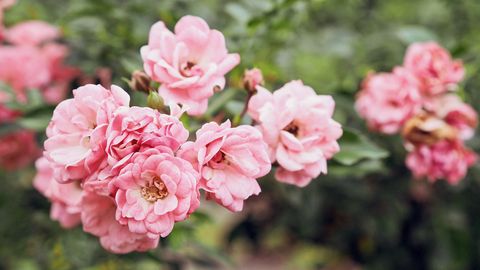
This compact plant typically grows up to 3 feet high and flowers in large clusters of small, 1-inch blooms making them wonderful additions to containers and small gardens. They’re known to be covered in flowers from spring to fall and are hardy, low-maintenance, plants.
7 Hybrid Tea Roses
Type: Modern Rose
Shown: Soleil d’Or
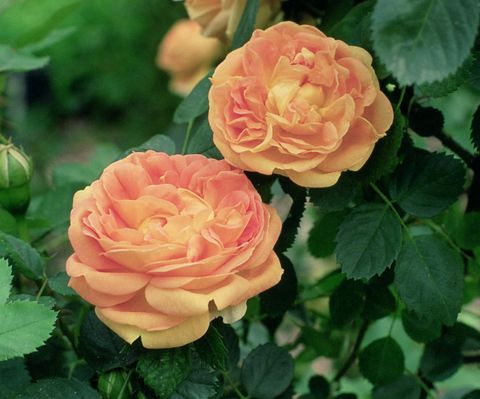
These garden roses have large, high-centered buds with 30 to 50 petals each that are supported by long, straight, upright stems. They make for popular cut flowers and are inclined to rebloom. They grow up to 8 feet tall and 3 feet wide. Hybrid teas aren’t known for being disease resistant, so many home gardeners shy away from the variety, but they are the standard rose of the floral industry.
8 Rambling Roses
Type: Modern Rose
Shown: Kiftsgate
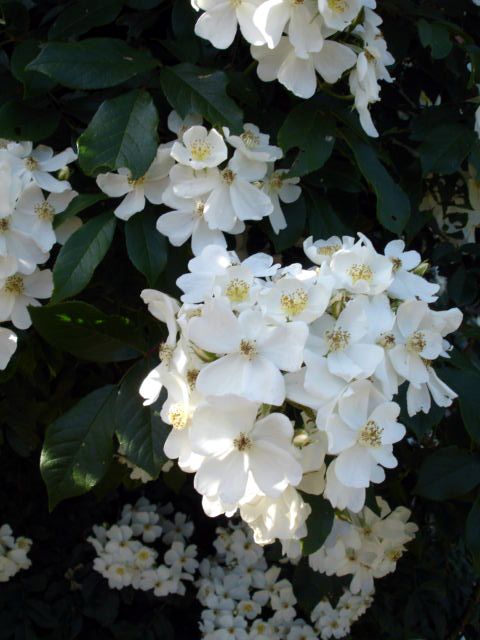
Rambling roses are often confused with climbers, but they are far more vigorous and often only bloom once during the summer season. They can be trained to climb with supports but will reach across anything in their path if not coaxed to grow up. (Think of the roses Maleficent sent crawling over Aurora’s kingdom.)
9 Bourbon Roses
Type: Old Garden Rose
Shown: Louise Odier
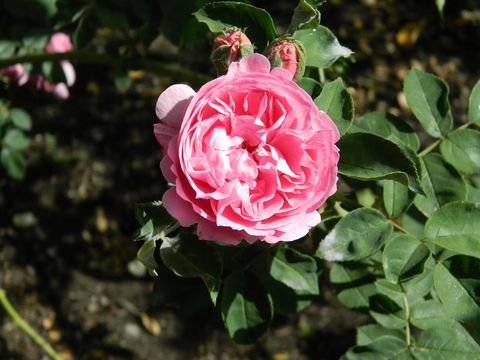
Named for the Île Bourbon (now called Réunion) of the coast of Madagascar in the Indian Ocean, these gorgeous full bloomers often have a lovely, heady scent. They typically have few to no thorns and can be trained to climb.
10 Miniature Roses
Type: Modern Rose
Shown: Venus
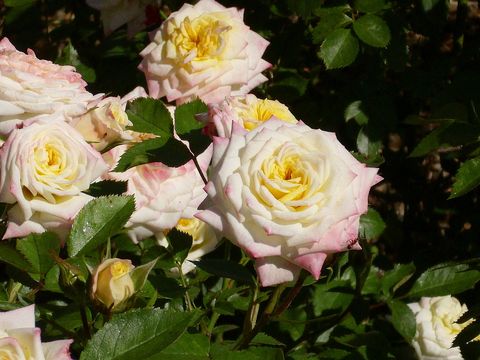
This extremely hardy variety is bred to stay small in size but comes in a range of types and colors. They only reach up to about 10 inches in height, making them perfect for small gardens, containers, or planted as a border into the front of a rose garden.
11 China Roses
Type: Old Garden Rose
Shown: Old Blush
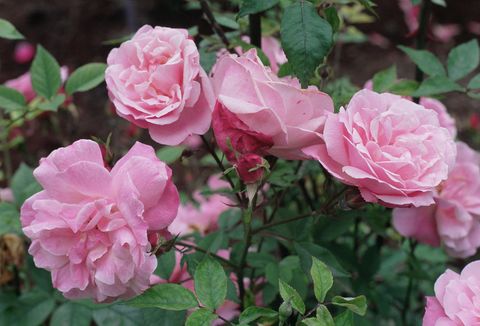
Cultivated in East Asia for centuries, these typically add less fragrance and smaller blooms than other old garden roses. They’re known for their tendency to “suntan” or darken over time rather than fading in color like other roses’ blooms.
12 Damask Roses
Type: Old Garden Rose
Shown: Autumn Damask

Named for Damascus, these roses were brought from the Middle East to Europe between 1254 and 1276. These roses tend to sprawl and have strongly scented blooms. Summer damasks bloom once, while Autumn of Four Season damasks bloom once in summer and once later in the season.
13 Shrub Roses
Type: Modern Rose
Shown: Swany
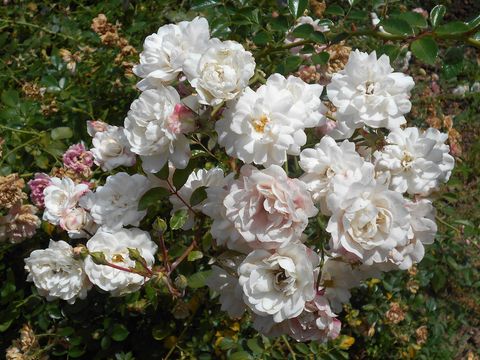
These are generally hardy and easy to care for roses. They’re easy to identify by the way the roses bloom on the bush. Rather than one bloom per stem, shrub roses sprout blooms in clusters, and they can grow up to 6 feet tall and 15 feet wide.
14 Noisette Roses
Type: Old Garden Rose
Shown: Blush Noisette
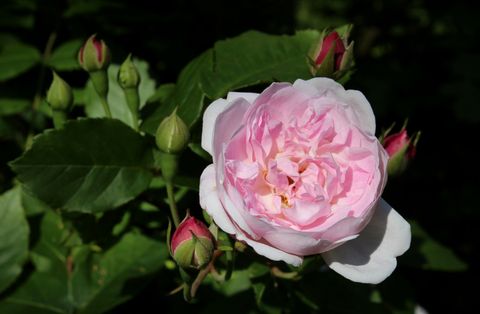
This rose was first born in South Carolina by combining a China rose and a musk rose. They are winter-hardy vigorous climbers with huge clusters of blooms. They were especially important in introducing orange and yellow hues into Old Garden Roses.
15 Tea Roses
Type: Old Garden Rose
Shown: Catherine Mermet
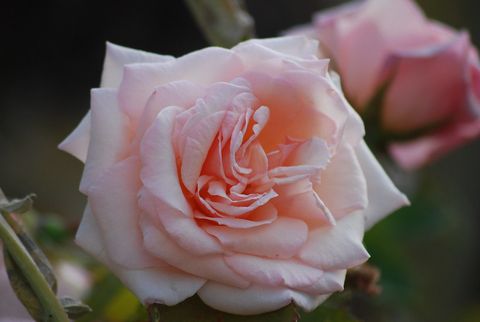
Originating in China, these roses are the O.G. of today’s classic florist rose form. They’re not hardy in colder climates. They have pointed buds that open in a spiral and often roll back at the edges giving the bloom a pointed tip. Original teas were yellow, but the repeat-bloomers were bred to include shades of white, pink, and yellow to apricot.
16 Wild Prairie Roses
Type: Wild Rose
Shown: Rosa Arkansana
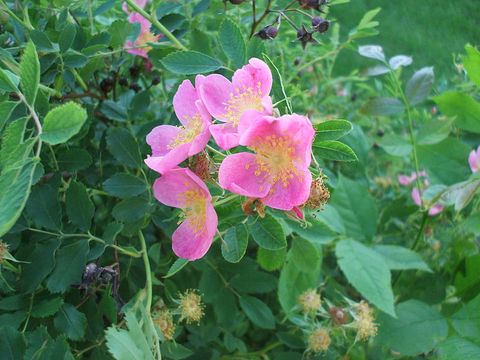
The name of this rose comes from Colorado’s Arkansas River where the species is found. This particular variety is native to North America and is found between the Appalachian and Rocky Mountains all the way south to New Mexico and Texas.





